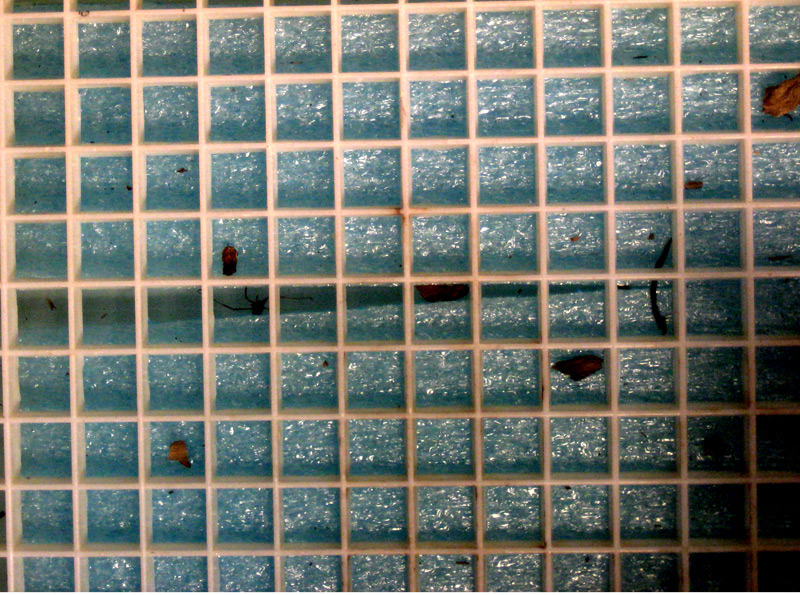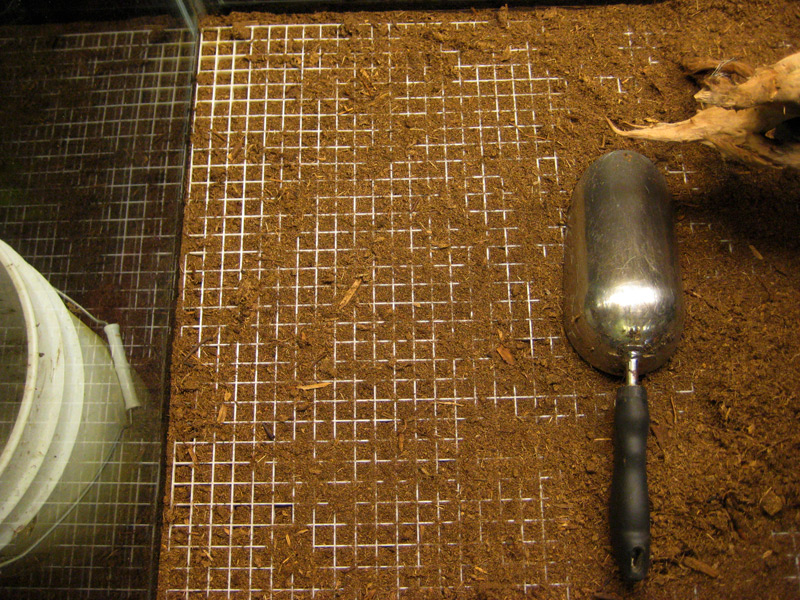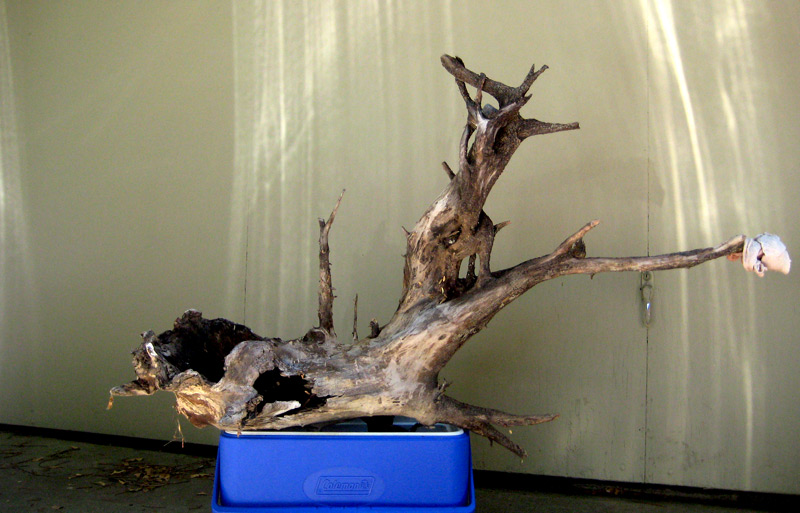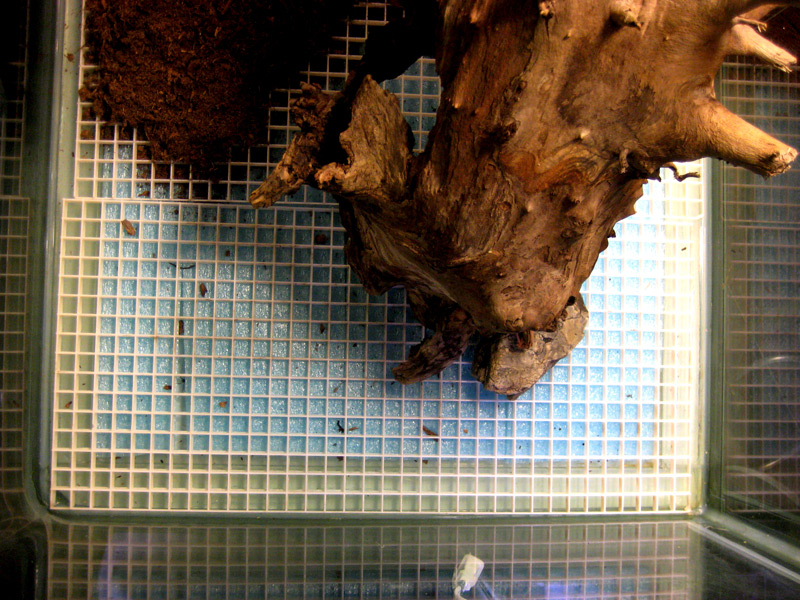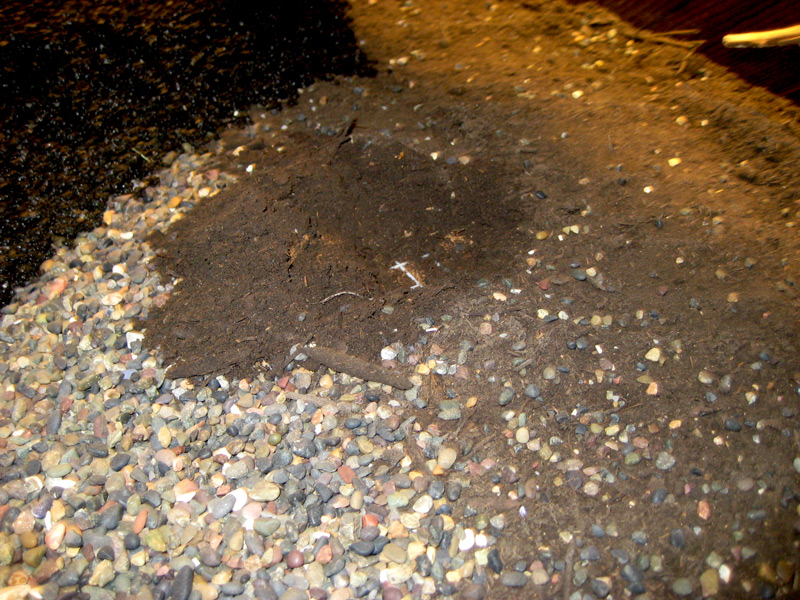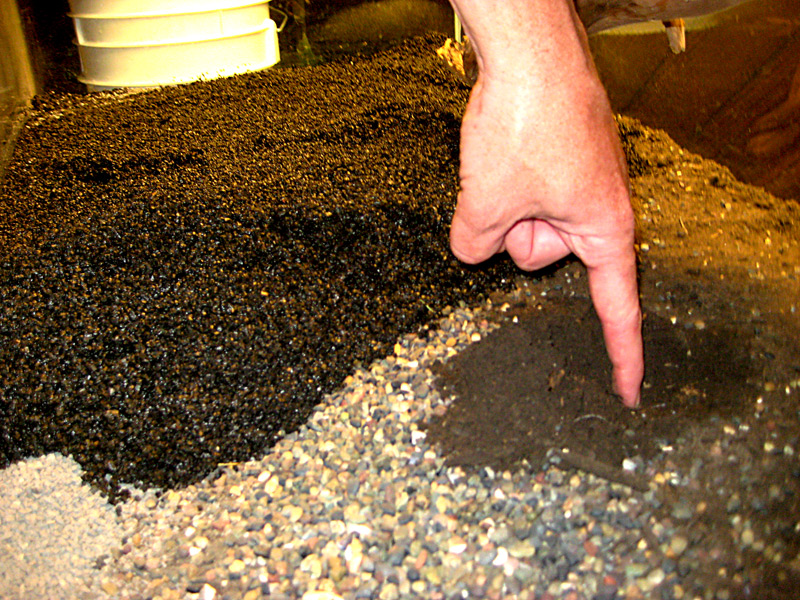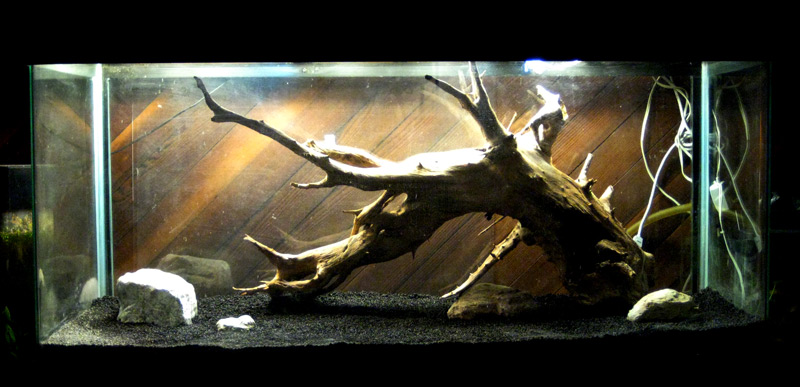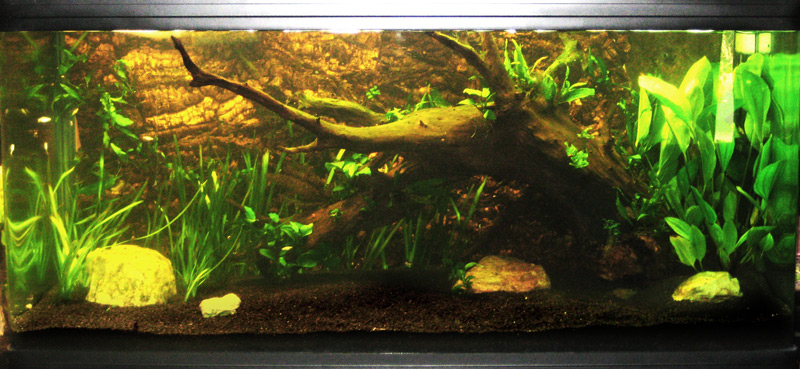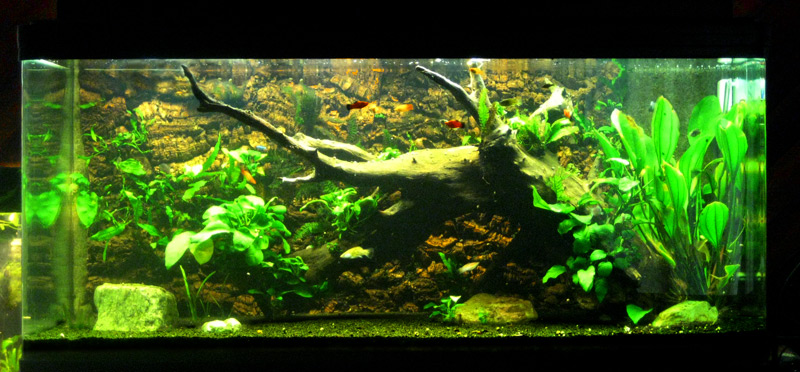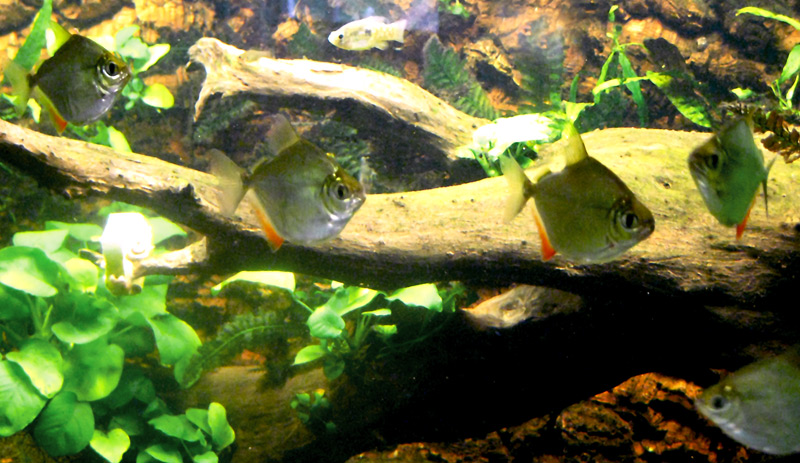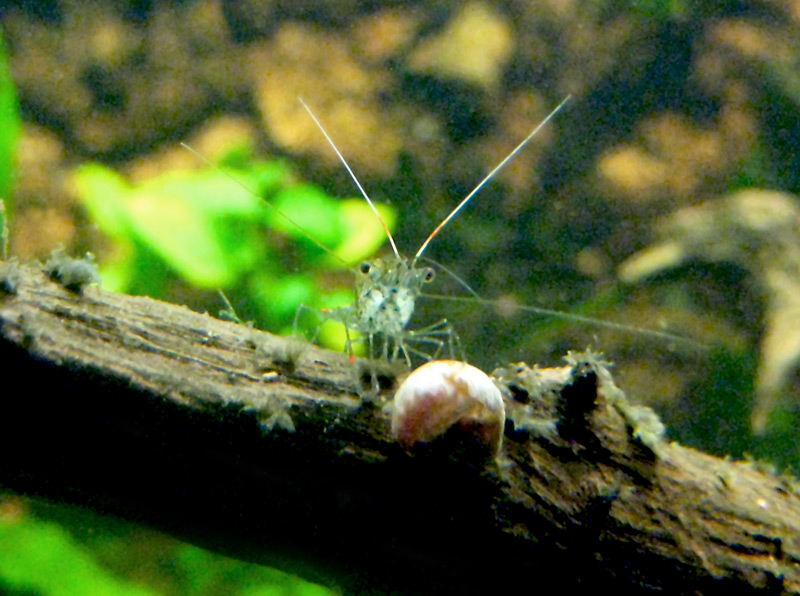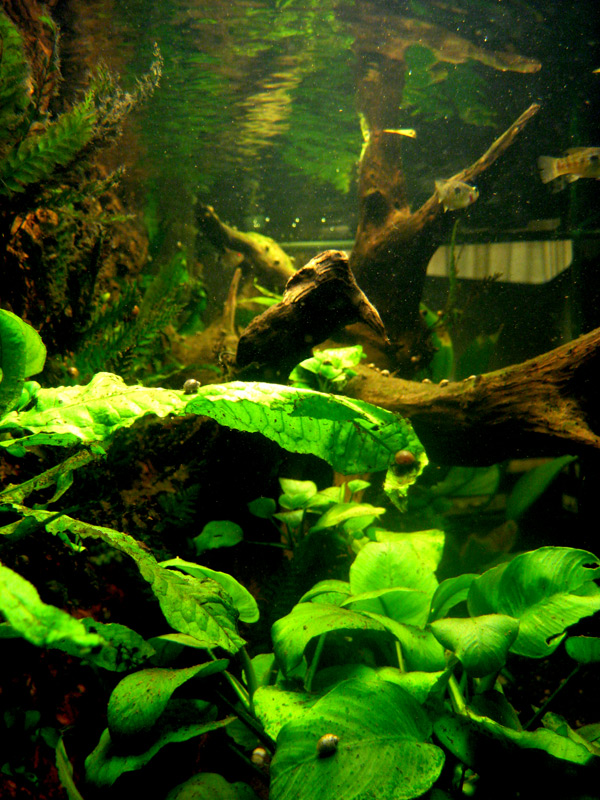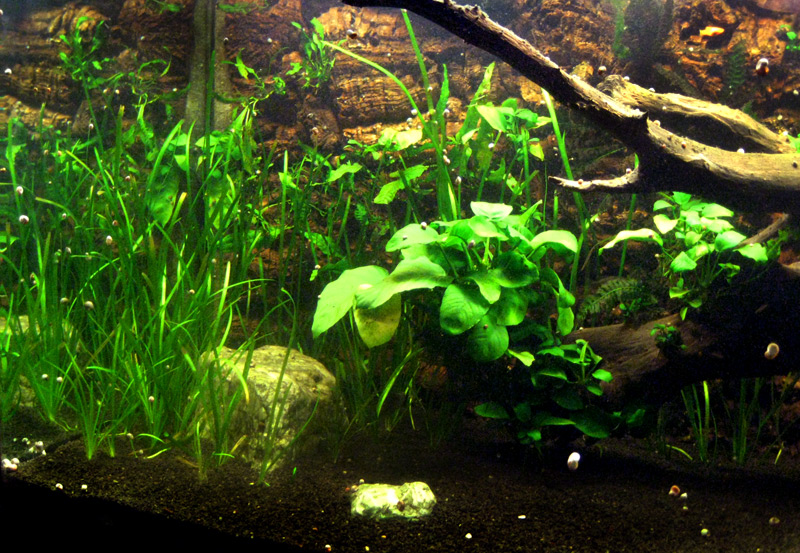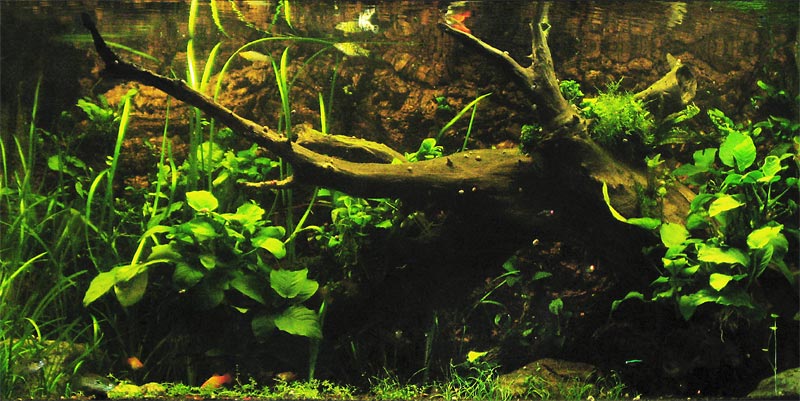168 Gallon Aquarium Update
After several years of relatively troublefree running as a naturally planted tank (NPT or "el natural"), the big 168 gallon sunfish tank's dirt substrate was pretty much depleted. This manifested itself with algae growth, as green string and cyano both became more and more troublesome. And unsightly.
So, the sunfish were evicted to the front yard pond until I could rebuild the tank. Everything came out, down to bare glass. No pics of this, but just assume it was tedious and dirty. Once the tank was completely cleaned out, I washed the inside of the tank down with 3% hydrogen peroxide solution, and then after it was dry, an ammonia/water solution. Good smells!
I laid down a layer of closed cell foam and then placed a couple sections of plastic fluorescent diffuser crate over the foam. This should protect the bottom glass from concentrated weight areas.
I wanted a soft water tank, so the first layer of substrate was a thin layer of peat. Just enough to fill the crate. The piece of bogwood to the left is wired to the crate with stainless wire. You can see some of the wire at the very top of the wood in view.
This is the really nice piece of bogwood, prior to cleaning. I spent half an hour working it over with the pressure washer, blasting the loose bark pieces away, cleaning off the mud. It looks to have been under water for several years, so I don't think any tannins are left to leech out. The rag is on that sharp end to keep me from stabbing myself in the "upper leg area" again.
The wood is mostly hollow, with some nice openings. The tank residents will love it.
After it was washed, I flipped it over and wired it to the crate. It had kind of dried out at this point, but the weight of all the substrate should keep it down until it becomes water logged again.
The substrate. Peat, backyard dirt, creek gravel, and "black" baseball infield conditioner (Turface). This is my first try with infield conditioner as a substrate. Hope it works...
1/2" of peat, 1"+ of dirt, a thin layer of creek gravel, and then 2" of Turface.
Dry set up. I thought, briefly, about trying the "Dry Start Method" again, but decided against it. The wood fit, but just barely. The rocks are in place. You can't tell in the pic, but from left to right, the rock are; white, green, red, and blue chert.
I wanted something on the back wall, other than black paper. I'd read about cork tile backgrounds and saw a small tank online that had a natural cork bark background. It looked very nice, so I made one for the big tank.
I spent a few days boiling the cork bark hunks in an outdoor turkey fryer. Two times through for each piece and they boiled clean. I took advantage of the flexibility of the freshly boiled cork and laid them out flat, adding weights (bricks, big rocks, etc) to keep them flat until they dried out. The cork bark comes in pieces about a foot square, and in the small tank I saw, these were siliconed directly to the back wall. That was a little too permanent for me, for something that might not work out, long term. For construction simplicity and the ability to remove it if everything went to hell, I cut a piece of 3/8" plexiglass to match the dimensions of the back wall.
Once the silicone was dry, I filled all the cracks and remaining openings with black expanding foam ("Great Stuff"). In the upper right, you can see a brownish grey area, this is a 12" x 16" area of filter mat. I glued it to the plexiglass, creating a good sized opening between the mat and plexiglass. I wanted my filter pick up to be behind this, as I was thinking about the future possibility of fry in the tank and I didn'y want then sucked into the filter. Plus the big piece of mat acts as a large surface mat filter (google "matten-filter").
The mat also hid the return line, except for the nozzle, which I poked through the mat. The completed background assembly fit like a glove, and is held in place by the substrate at the bottom, and the tank rim on top. I added a barrier strip of filter mat material on each end to completely seal off any possible openings behing the background.
Below: A couple weeks in, cork wall in, plants planted, tank mostly cycled, a couple mollies adding poop to get things stabilized, still just slightly cloudy.
A few months later... You may notice there are no sunfish in the tank. The local raccoons were somehow alerted to the presence of fresh fish in the pond, and ate them all. Another thing to notice is the relative lack of vals, compared to the above pic.
Like a fool, I added a small school (5) of silver dollars. Within a week the vals were gone, along with a good portion of the melon swords, any new anubias leaves, plus an inch thick slice of cucumber everyday. The silver dollars were traded away as soon as I had time.
The current tank residents are; sailfin mollies, assorted plattys, flagfish, a couple L-144s, some unknown number of grass shrimp, snails, and a few lucky cardinal tetras. More will be added later, once the plants are filled in.
From the end of the tank. The wood looks great! The anubias are taking off. The bolbitus and java fern pinned to the cork wall are starting to grow as well. Eventually, the entire backwall will be covered. I added a big scoop of blackworms, and I'll get some new vals and low light foreground plant going, too. Probably pygmy chain swords or maybe some small variety water clover. On the Turface as substrate; it looks good but is pretty lightweight compared to, say, Eco-complete.
Couple weeks later... new vals, taking off. Still no new foreground plants.
Getting there...
